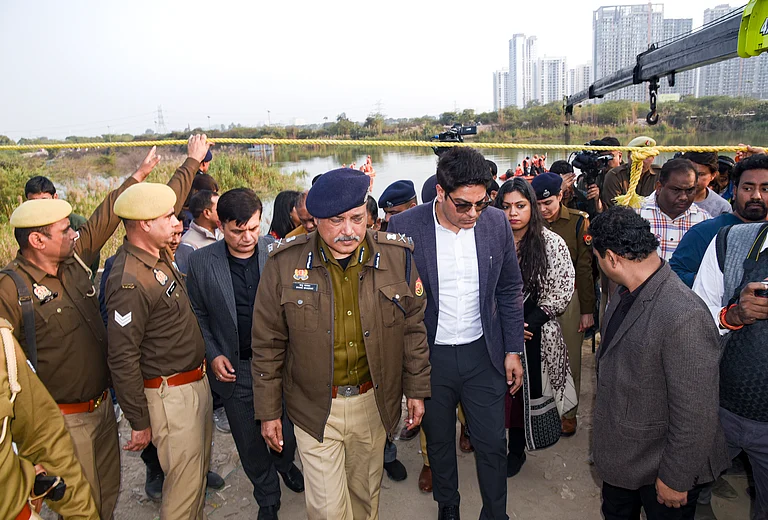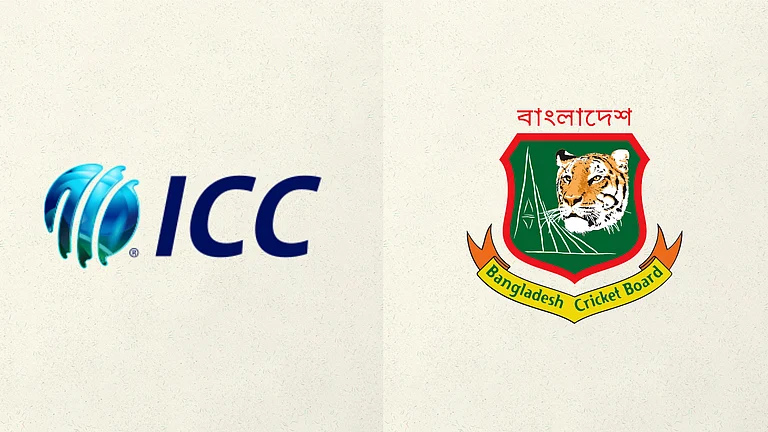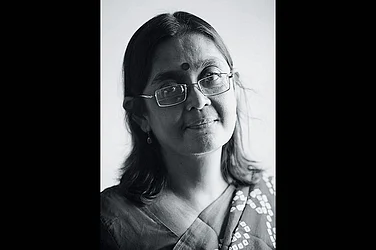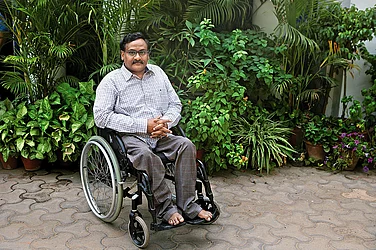Bank Of Life
- Eighty years ago, the first hospital blood bank system in the United States was established by Dr Bernard Fantus at the Cook County Hospital in Chicago, Illinois. As a result, the number of transfusions more than doubled at the hospital in the following year. It was a life-saving idea indeed.
***
A century after her birth will have elapsed on November 19 2017. A hundred years ago that day, the young lawyer Jawaharlal and his wife Kamala were blessed with a daughter. From day one, Indira’s life was intertwined with larger forces that would reshape India and the wider world. The India of today could scarcely be more different from the one she was born in. Nor the world. Ten days earlier, the Bolsheviks had taken power in Russia. In 1918, the guns fell silent across the killing fields of Europe. The following April came the Amritsar massacre that was a turning point for the Raj.
In popular memory, there are two Indiras—not one. Admirers point to the victory in the Bangladesh war when she defied the odds. The Green Revolution saw India transit from a ship-to-mouth existence in the late 1960s to food self-reliance within a few years. At the same time, critics rightly refer to the deep emasculation of the Congress internal fora of debate after 1969, and the party’s eventual transformation, from the Emergency on, into a family-led party. The Emergency, though it lasted only about 19 months, left a deep scar on the body politic. Both views have substance, but neither gets the point. She was as much a product of her times as a figure that sought to shape the currents of history.
Much has been made of her lineage. But her drive and courage stood out early on. Her two years in jail as political prisoner in the freedom struggle are often forgotten. Few can forget her reply as a ten-year-old when being asked where the elders of the house were. “All”, she said, “have gone to jail”. The letters exchanged between Nehru and the young Indira span from 1927 to barely ten days before the former’s demise in May 1964. They show a strong-willed, widely-read young woman, often holding her own even with “Pappu”.

A 1966 portrait, the year she became the Prime Minister
Her role as campaigner for the party from the 1952 general elections on, and her brief stint as Congress president, did not make her in any way a frontrunner for succession. Nehru’s hold on power was shattered by the October 1962 war. Following the exit of virtually all key strongmen from his cabinet under the Kamaraj Plan of 1963, there was a clear heir apparent. He was the new minister without portfolio, and the one who succeeded him: a unifier, the soft-spoken but steely Lal Bahadur Shastri.
Indira Gandhi’s true emergence was gradual, though steady. In 1959, as Congress president, she advocated the dismissal of the elected Communist ministry in Kerala. In 1962, she was one of only three leaders to scrutinise the list of party candidates for the Lok Sabha. The other two: Nehru and Shastri.
Her own coming to power in January 1966 was engineered by Congress president and kingmaker Kamaraj Nadar. The collection of party chieftains, many real regional satraps, saw her as pliable and easy to deal with. The rest is history.
The clash with the titans of the party cannot be delinked from a more fundamental question. Who is to be the pivot of the polity in a parliamentary democracy: prime minister or party president? The answer was obvious to Nehru when he bested Acharya Kriplani. So too with Indira Gandhi, except she did not hesitate to precipitate a division in the party. The old Syndicate was out.
This divide coincided with her stepping back from the US embrace. Her first foreign trip to Washington DC, in 1966, had resulted in food aid. President Lyndon Johnson, embroiled in the Vietnam War, saw her as a staunch anti-Communist and praised her “considerable courage”. The devaluation of the rupee shortly after led to the rift with Kamaraj. But the pro-market tilt yielded no political dividends. Not for the first time, she shifted tack. P.N. Haksar replaced L.K. Jha as her principal secretary. The Young Turks, especially Chandrashekhar, became key to her moves on the chessboard.
Her steps were deft, swift and decisive. The abolition of privy purses and state takeover of banks gave her a left-wing platform. At a time when eastern and parts of southern India were seething with left-wing discontent, she took the wind out of the sails of rebels against the old order. In the mid-term poll of 1971, a figure very different from the diffident speaker of 1967 emerged on the stage. The slogan ‘Garibi Hatao’ was a game-changer in every way. No Indian leader had embraced the dream of an equal society so equivocally.
By now, storm clouds were gathering over East Pakistan. In her execution of the war and its aftermath, she crossed many milestones. President Nixon’s “tilt” to Pakistan facilitated the genocidal assault of the Pakistan army against unarmed civilians. Indira Gandhi had world opinion, key European leaders and even US Congress speaking out on India’s side. The surrender of 93,000 soldiers in Dhaka was the largest since Stalingrad. Though often berated today, the Shimla Accord laid the foundations for every subsequent India-Pakistan dialogue in the last 45 years.

In the midst of Congress ministers as head of the government
Contrary to myth, she was neither pro Soviet nor anti-American. She simply had to balance roles in an Asia marked by not one but two Cold Wars: the US-Soviet and the Sino-American. She took steps to repair ties with China in 1976, restoring full diplomatic ties. Links with the US were rebuilt via World Bank president Robert McNamara. Later in her second spell, her personal chemistry with then US president Ronald Reagan and the deal with the UK to buy Jaguar jet fighters showed her for what she was: a tough pragmatist.
On the home front, 1971-72 marked a zenith which she never really recovered. The hopes of egalitarian change never quite came true. On the contrary, the costs of the war and oil price hike made food, clothing and shelter more, not less, distant by 1974. As the dream unravelled, she also faced a major all-India strike of the railway unions that summer. The tough measures taken were a foretaste of the future.
The Emergency of June 1975 was not simply due to her persona but arose from a deep malaise in the polity. India, like many other countries—Pakistan, Bangladesh and Philippines, to name but a few—faced a crisis. The state system was unable to meet popular aspirations and chose instead to choke off avenues of self-expression. But there was a major difference in the Indian situation: Indira’s new adversary, J.P., rekindled the older traditions of civil unrest. He simply asked that corrupt rulers go home. To this challenge she responded with force; and the Emergency, while a tactical win, proved her undoing in terms of democratic legitimacy.
The suppression of civil liberties and the large-scale arrest of Opposition leaders ironically laid the grounds for their future unity. It made an anti-Congress party a reality by early 1977. More seriously, slum demolitions and the forcible sterilisation campaign deeply shook the trust of the rural and urban poor. They had flocked to her banner in the Lok Sabha polls of 1971 and the assembly elections after the Bangladesh war.

The Indo-Pak war surrender in 1971, a major national feat under Indira
Her critics are chary to admit this, but her finest hour was not the announcement of elections in January 1977, but her graceful exit in March after her stunning defeat. India showed it could handle a peaceful transfer of power; so did Indira.
The campaigner in her was soon back in action. As Janata rule crumbled, she gained ground. But the longer-term impact on the party was lasting and detrimental. The Congress split again and this time there was no mistaking who would hold the reins after her. Sanjay Gandhi, the main gainer in the Emergency years, was a key architect of Congress recovery.
‘Bring Indira, Save India’ was the slogan on which she rode back to power in January 1980. Growth had been a negative five per cent in 1979-80. The new decade saw it at a healthy clip of 5 per cent. India’s peaceful rise had begun. But politics was another matter. Her biographer Inder Malhotra wrote presciently of the post-1980 era. She did not lose control, he said. She was never fully back in charge.
The India of the 1970s was gone forever. In Uttar Pradesh, the challenger was Charan Singh, who unified cultivators and religious minorities. In Andhra Pradesh and Karnataka, undermining capable regional leaders paved the way for the victories of NTR and Hegde respectively in 1983. The new chief minister of Jammu and Kashmir, Farooq Abdullah, made common cause with other leaders against the Congress. In Assam, the state was unable to hold a free, fair and legitimate poll till 1985, after her demise. India had outgrown her politics.
It is here that her most wounding legacy emerges. At one time, the young Indira had worked among Muslims in the refugee camps of Purana Qila. She also served in the camps of those displaced from Punjab and Sindh. It is difficult to see in her any traces of sectarian animosity. Speaking in 1981 in Delhi University’s St Stephen’s College, she likened India to a salad bowl. Unlike America’s melting pot, many identities could coexist nestled within the larger entity of India.

In 1977 at the Shah Commission, which was constituted to inquire into the excesses during Emergency
But actions spoke louder than words. This phase marks a soft Hindutva phase of Congress politics. The party gained from RSS support in the Delhi Metropolitan Council polls of February 1983. In Jammu and Kashmir, the removal of the elected government of Farooq by Governor Jagmohan took the state to the edge of a precipice. In Punjab, the dalliance with the violently intolerant Damdami Taksal was ‘balanced’ by encouraging anti-Sikh sentiments in urban north India. The Panipat violence of early 1984 was a precursor to the massacres of Sikhs in the wake of her assassination.
Such divide-and-rule politics was a negation of a central tenet of her own early life. Law-governed politics in Punjab was steadily undermined by New Delhi. She was playing with fire. Operation Bluestar became unavoidable by June 1984. It was a fatal miscalculation, a profound failure of her politics.
Indira Gandhi’s end was violent and tragic. Her credo, as of her heroine Joan of Arc, was ‘put the country first’. But did she? She recast India’s oldest party in a new mould and redrew the map of South Asia. It emerged as a nuclear power and entered the space age. India rose to greater heights. It was also a nation more at odds with itself.
Her sense of raw power was far more developed than her late father’s. Nehru fostered institutions, she weakened them. “India needs no Caesars”, her father had famously written, but her hand-picked party chief equated Indira and India. Kin-clan rule is now the norm in most parties but she was the trendsetter. So too with snuffing out inner-party democracy.
No one can deny her sheer force of will and deep mastery of statecraft; but the scars on the polity were deep and lasting. Her fifteen years in office saw her transform much of the country. A century on, India has not fully emerged from the shadow of her legacy.
Mahesh Rangarajan the writer is a professor of history and environmental studies at Ashoka University






















